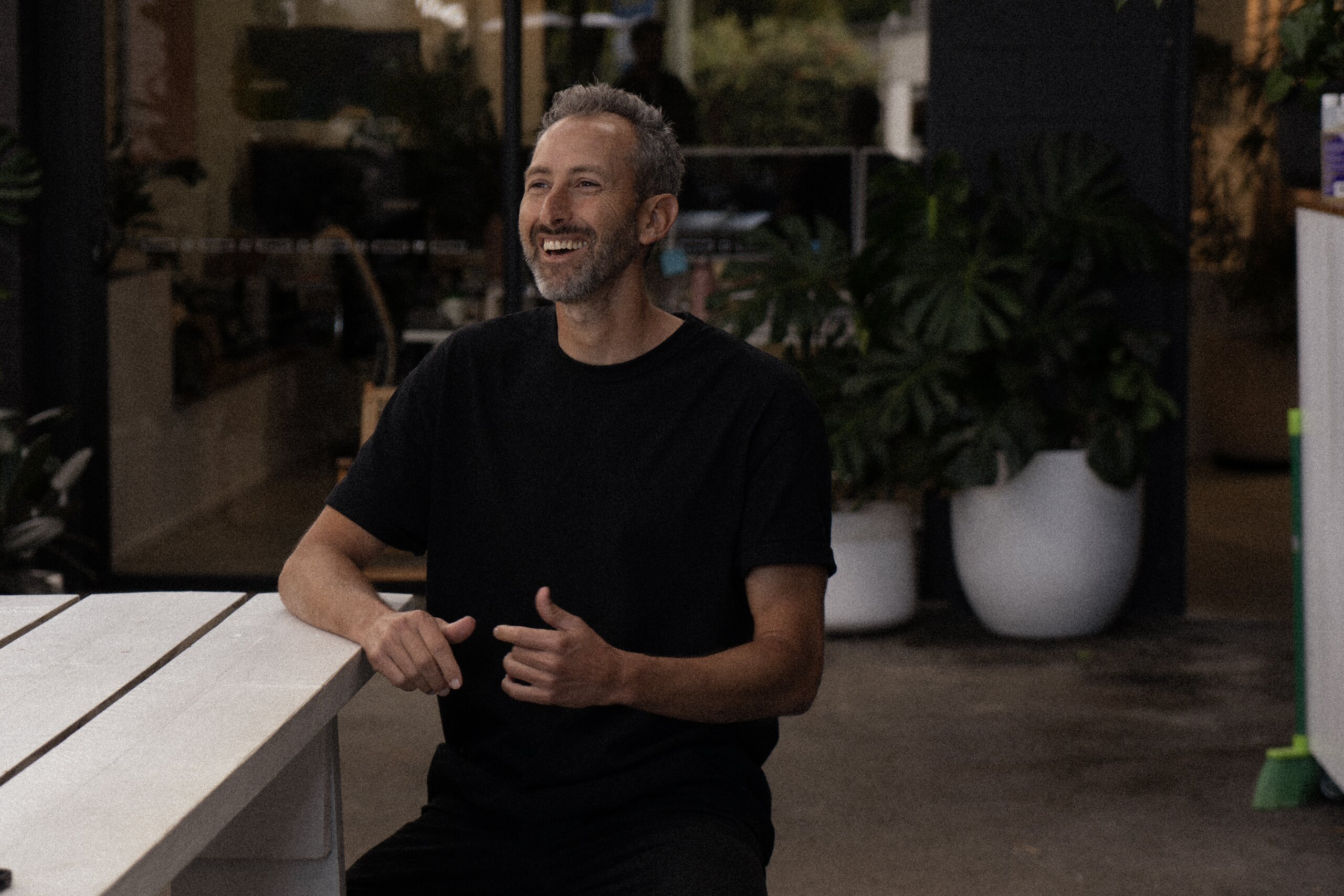There’s too many brands in this world.Too much fighting for the same space. Too much same-same. That’s probably because old players tend to get stale, stop taking risks while new starters leap in, absent of mission and without being different or measurably better. And yet, against this backdrop, smaller, nimble, socially aware, product driven, community focused brands continue to gain share, standing out above the sea of sameness.
As they say, success leaves clues. I’ve spent the last few weeks deep in research mode specifically looking at the smaller emerging companies that are bread-crumbing a trail of ideas that pressed together, make up a modern brand framework;
1. Innovating the product
I really wish there was a vitamin for innovation. I’d be washing three down every morning. It’s so difficult to innovate products or services becuase it requires us to think differently. That is to step out of the daily motions, sit in silence, synthesise everything we know about our customers, markets, products — mashing that together with original thoughts to create ‘new’ and then test those assumptions.
We’re often lulled into what our customers want today and that creates a pattern of behaviour in our minds that’s often hard to break.
There’s some very good examples of Australian brands doing an excellent job at off-the-grid thinking, which is leading to innovative products. Brands like NEED essentials for example. Someone took an innovation pill and asked ‘what if we created a wetsuit brand with no branding at all, we manufactured it to the highest standard and sold it direct to consumers through online only channels for a fraction of the competitors price?’ Not only did they ask, they made it happen.
2.Breaking up with Tradition
If ‘product’ is a critical building block to brand, breaking up with tradition is it’s best mate. Let’s take the accounting firm for example. Hop in the way back machine to circa 2010 and accounting business had names like Smith & Smith, did your company tax and maybe the odd bit of business advisory when things looked a bit dire on your balance sheet. The ‘tradition’ lulled just about every accounting firm into doing the same thing. And then John Knight at businessDEPOT decided to break that tradition of stale, stodgy delivery of number crunching and replace it with something brighter, more inspiring, bigger than just accounting, anchored in advice, learning and a community for business owners where they could get all the answers in one place;
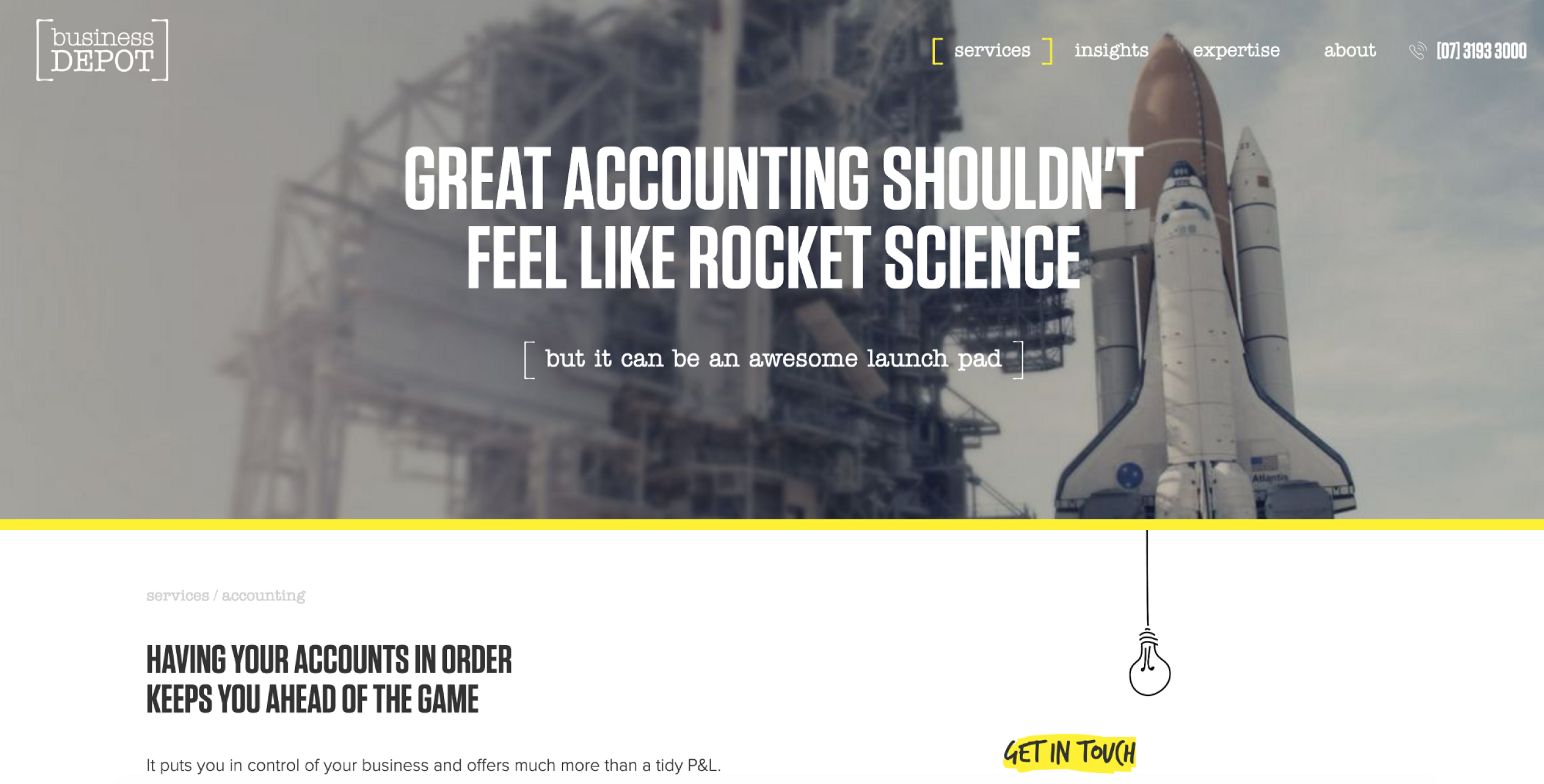
Traditions are a way of doing things, repeatedly. It’s your job to find a way to break the conventions of normal to make something a little bit awesome.
3. Simple. The hidden brand strategy.
My life is full of decisions. Choosing from an array of breakfast options is stressful. I’ve been meaning to replace my wardrobe exclusively with black turtle necks and blue jeans to cut down on choice. So it’s with great pleasure when I come across brands who make the process of choosing, easy.
Don’t overlook ‘simple’ as a brand strategy — there’s power in it;
Creates focus and depth in your product or service range.
Less to get across means you can build better things or become an expert in the service you deliver
It makes it easier for customers to choose to buy or work with you
Thankyou, the socially conscious brand does a great job of this for a couple of reasons. The product line up is easy to get my head around. I know that every product I purchase helps pull people out of poverty. The brand packaging is consistent. And body wash comes in 4 flavours. These are simple decisions I can deal with.
4. Give backs
If you’ll allow me to go all political for a moment, we cannot wait for politicians and government to build the type of society we want to live in. Business outpaces big government by some margin, is more sensitive to consumer attitudes and is better at picking up on the general vibes of the market faster.
Hats off to the new generation of brand founders who have decided to combine commerce and social awareness into products and brands. This trend is here for the long haul and for good reason: it makes for great business. It’s true we are a nation of slackactivists. Doing our bit by buying stuff that does good things for our local and international community makes us feel rad about our buying choices.
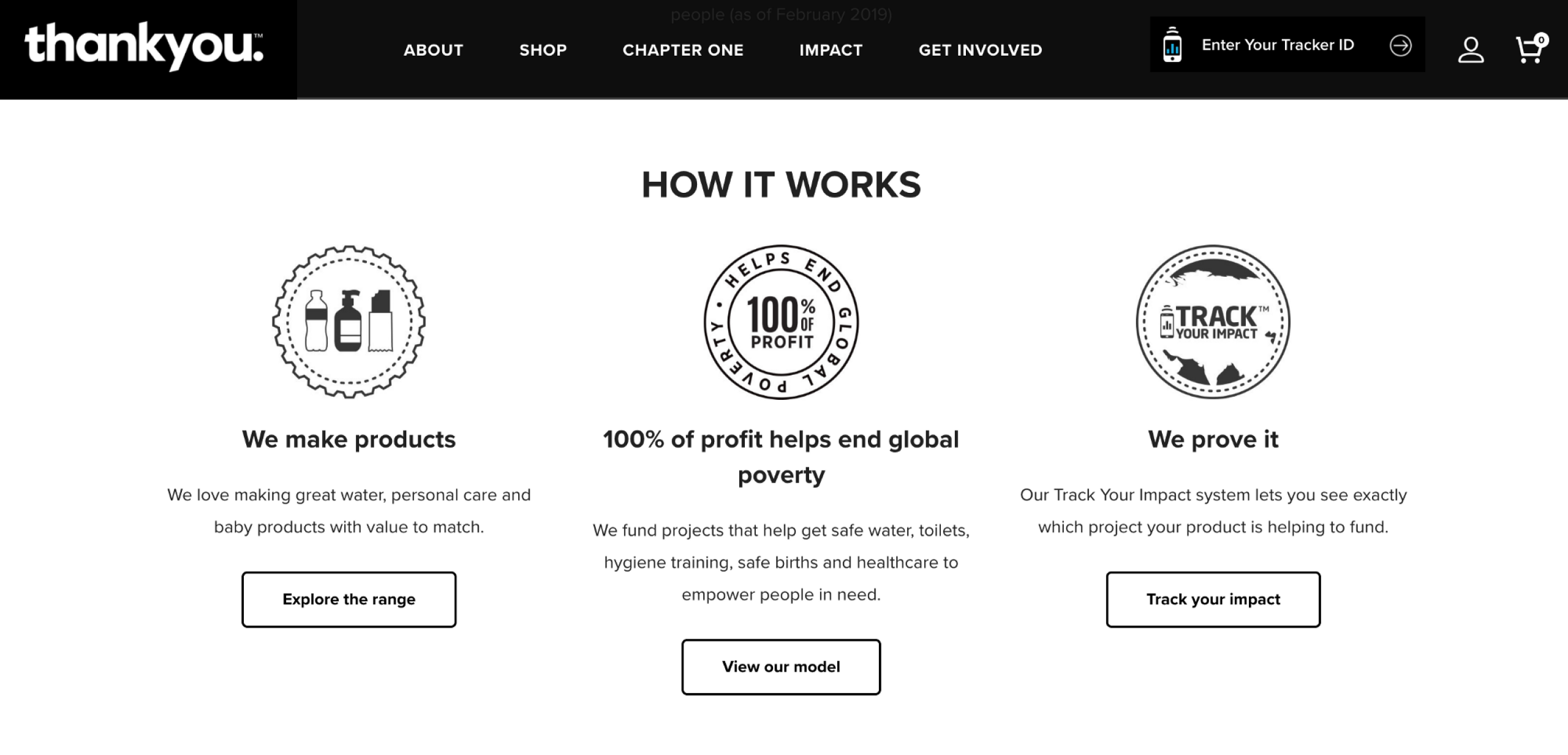
Deciding to give some of your profits back to a cause is a great first step but try to dig deeper and find a cause that really aligns. Buying a goat for a Somalian family is a nice thing to do but if you’re a business lender for example, maybe aligning with Kiva to give interest free loans to people on the poverty line makes more sense for your brand.
5. Cutting the layers
I’m from a retail background and about a decade ago, retail brands started going ‘vertical’, a process whereby the retailer designs, manufactures and sells the product without the need for any distribution layers. Once the domain of the best funded players in the market, e-com platforms plus direct access to manufacturers has opened up that model to virtually anyone with $10k in the bank.
Having a direct to customer model was once about profit margin but now there’s a much more important reason: Direct relationships with customers.
Brands built on this type of direct to customer model are winning and that’s becuase they can have the 1:1 conversation, feedback loop and relationship with the customer. It’s the same for the customer, with direct access to the company who makes the stuff they are consuming.
Take plants for example. Tradition says we should fire up the car, head down to the local hardware store, wander around aimlessly looking for help, grab an indoor plant by mistake, stick it in the full sun and yep, you have just become a plant killer. Along comes plants-in-a-box, built for people who love plants but don’t have a clue how to grow em’.
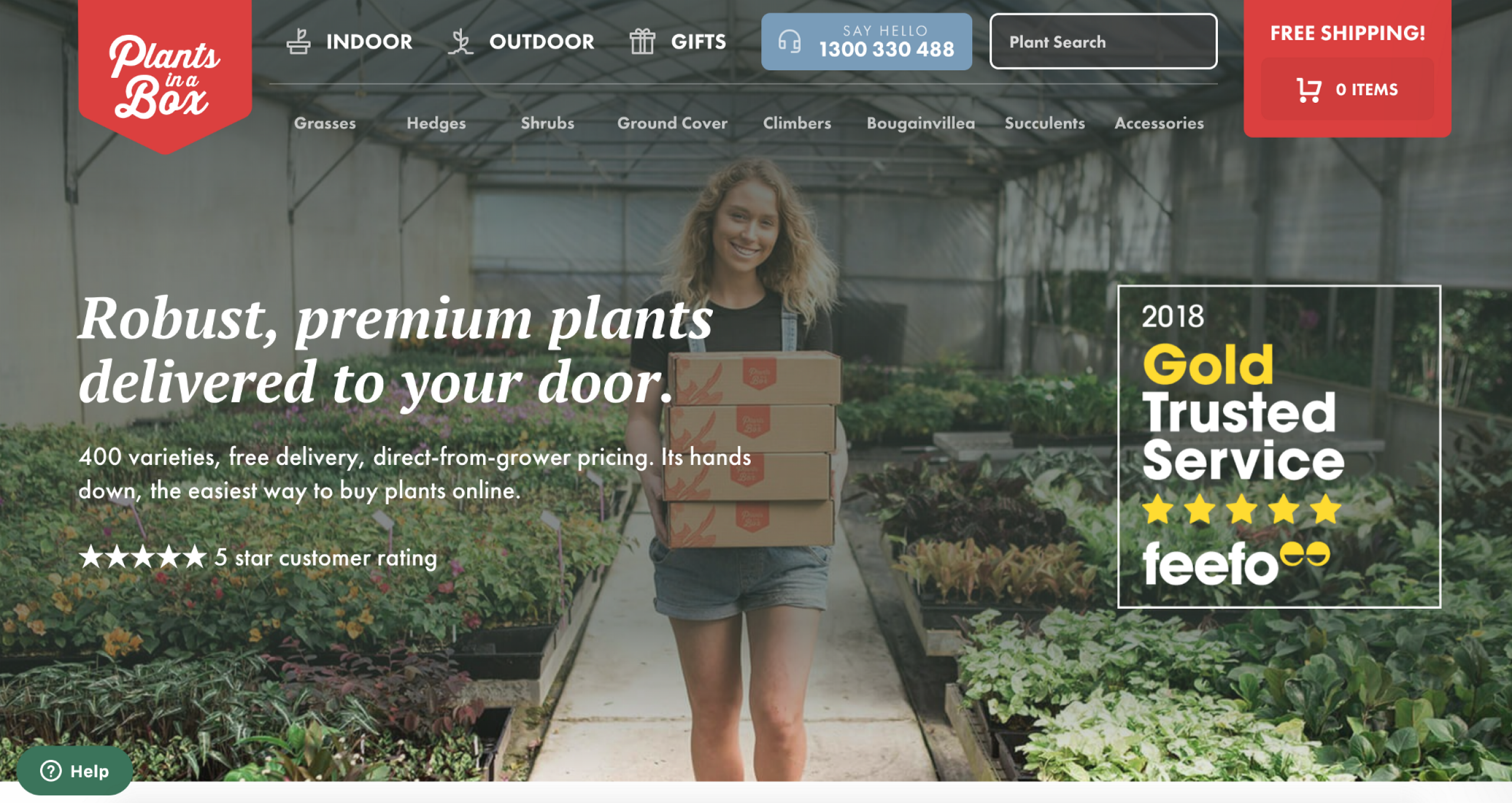
It breaks tradition by only selling online, guiding you through the growing process with it’s garden coach service. By cutting out the layers (hardware stores with crappy service and knowledge) and having the conversations and education from plant nerds to plant lovers, it’s ‘grown’ to a community of 20,000 committed, passionate followers.
6. Character amongst a dull landscape
Humans are full of character, businesses are not. That’s becuase when it comes to matters of money and risk, we opt for the safe option and alas safe identity is a little bit dull. Why is it then, that moderns are winning, punctuating the business landscape with not-so businessy copy, visuals and photography?
Take frank body, the brand built upon a single product, a coffee scrub (as a bloke I know categorically nothing about). First to create a coffee scrub? I think not but maybe the first company to really innovate coffee based skincare with it’s superb packaging, witty copy, inclusive photography (using +size models) and high doses of design.
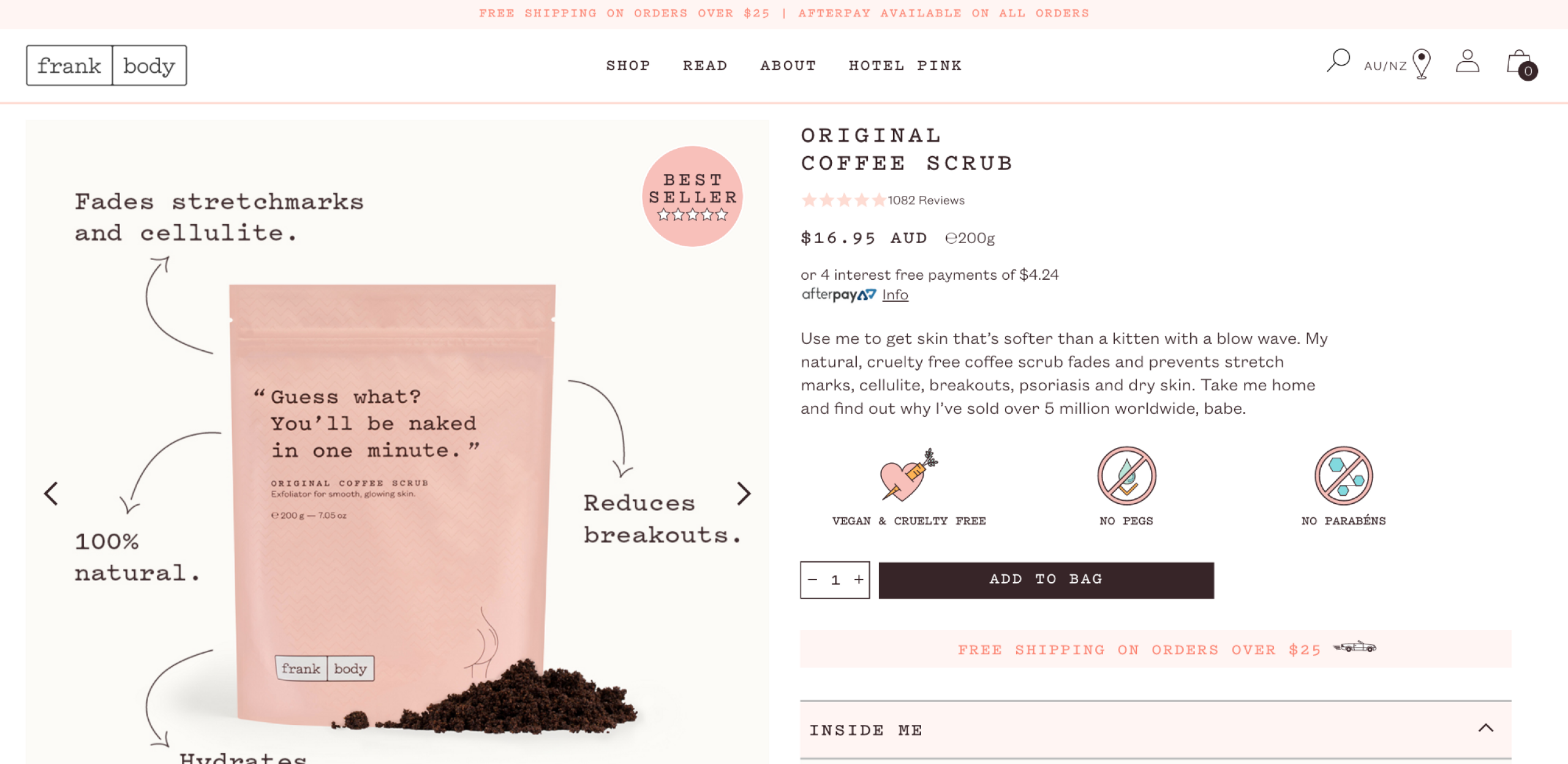
The purpose of identity is to stand out and stand apart. By talking in a natural way through their products, familiarity instantly occurs. Paired with the right colours (pastels + brights) a friendly typeface and snappy packaging, we lay down our consumer defences and know instantly this brand is for us (well at least for the ladies and the hipster gents!).
Identity creates the ‘feels’ and that in turn attracts attention. That attention jump starts the whole process of discovering your brand. Investing into identity can have a huge payoff for growing and established brands and yeah, don’t forget to take some design risks along the path!
7. Inclusiveness. It’s cool to be kind.
Inclusiveness is a modern brand trait, from size to colour, it pays to include. It’s good business and good for society. But an inclusiveness policy can also explore other territories. ‘Only a surfer know’s the feeling’ is the famous brand line from one of our most iconic brands, Billabong. It also happens to be exclusive and a little whiff of arrogance. If you don’t surf, sorry you can’t be in the club. Whatever bro.(Side note: that tag has been updated to ‘know the feeling’ these days)
Let’s imagine you had the drawing skills of a 3 year old (as I do) but you would really love to learn the skills of painting. For many people the fear of doing something they love but are hopeless at, stops them at the front door. And what if you did pluck up the courage to take a class in painting but saw the art school advertising ‘Only an artist know’s the feeling’ ? You’d probably lock up the brushes. On the contrary, what if it said this;

Would you feel welcomed? Would you feel included?
By making a policy of inclusiveness and messaging around this brand value, you lower fear factor and increase the chance of making new connections and customers.
8. Guilty, by association
The idea of brand association has been around for a long time: that is the concept of pairing your brand with a lifestyle, an image or an outcome that sits nicely on the shelf with your offering. Here’s some examples;
I sell you a wetsuit: Surfing remote locations
I sell you plants: Designer gardens
I sell you body products: Lifting people out of poverty
I sell you accounting services: The entrepreneurs life
I sell you craft beer: Relaxing with my crew
Associations are important because they help teleport our customers further into the future; I’m not just buying the wetsuit, I’m buying the thing the wetsuit will allow me to do (surf in the middle of winter with my mates having laughs and sharing sunrises). Associations matter because they help us deliver a BIGGER message. I can’t find a single ‘buy a wetsuit’ post on the NEEDS essential instagram feed;
It’s pure surf porn. And it’s crazy good brand association because they understand I’m more interested in the waves and the lifestyle and maybe I’ll get curious about wetsuits at some point. Someone made the decision to stay out of my purchasing way and let me come to the brand naturally, through association. On ya mate.
9. Save the trees, win customers.
Honestly, if the best solution to dealing with rubbish is to bury it in the ground, we’ve got a long way to go as a civilisation. We can produce electric cars, get wi-fi on a plane and send commercial aircraft into space but we can’t figure out rubbish? Luckily, as brands we’re aiming higher and becoming more aware of our impact.
Saving tree’s and being more conscious about our footprint isn’t a new idea, nor is promoting this as a brand value. What is important is continuing to find new ways to be better and cause less harm to the environment and make sure you are talking about it because there’s a whole cohort of customers who care deeply about this stuff.
Let’s take a brand like ascolour, creators and curators of un-branded apparel. Responsible sourcing is right there on the home page. They want customers to know they care about this stuff and in-turn have customers care about where their t-shirts come from and how they were produced.
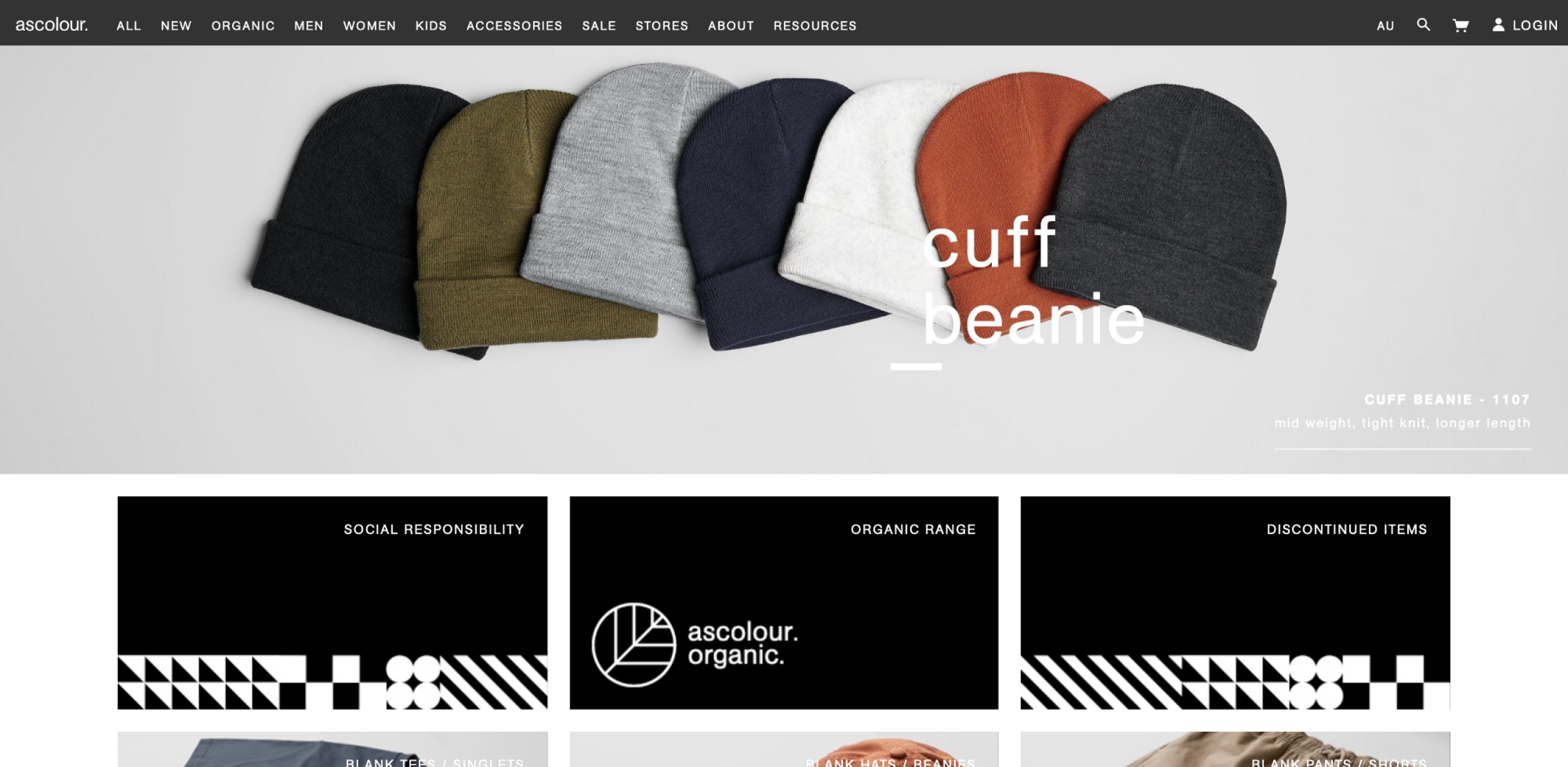
Your environmental policy might not be the only reason a customer signs up but it could just be the tipping point, when weighed with the other brand values & products that push them toward your brand and not others.
10. Made right here in Straya, mate.
I remember back in the early 80’s watching TV and seeing ‘Australian made’ commercials dominating the ad breaks. And then just like that they disappeared from my not so flat screen. It’s extremely rare to see a product that’s made in Aussie now days but when I do, it’s hard not to be a little intrigued.
Just like paddock to plate hit restaurant customers right in the gob, Australian -made has a place in the brand communications. Ethical sourcing has shone some light in dark alleys, making us think more deeply about how our products get made. Australia has strong labour standards and is associated with quality products. Take patriot campers, a company building these nifty Swiss army like camping trailers right here in Australia
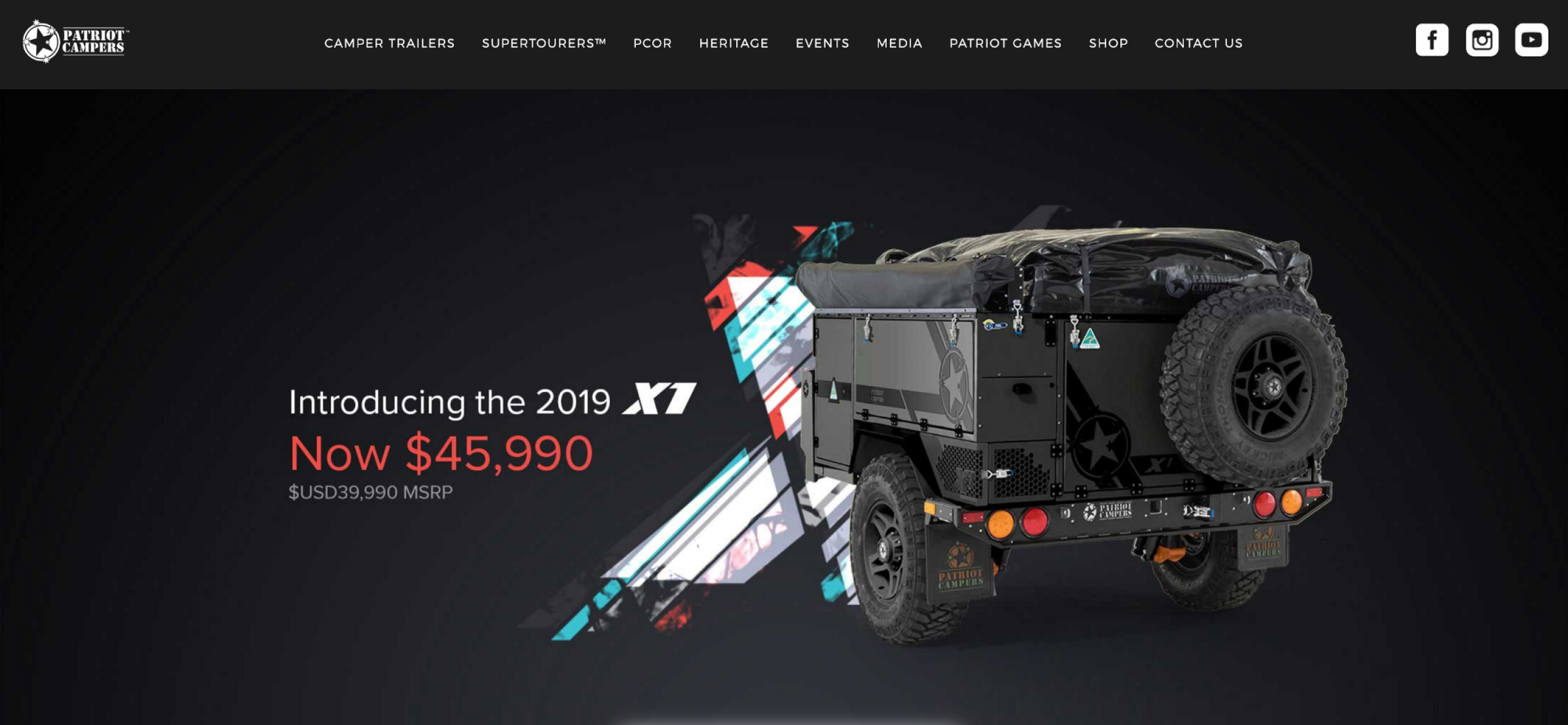
Made in Australia is not an avenue open to all brands, but for those companies who do building this into your brand story is important. We generally associate products made within our country to be of a high standard and a badge of quality, so pin it on the chest if you can!
11. Common interests build communities
It might just be the most sacred, most holy ground a brand can aspire to and that’s building a community around what you do. Seth Godin remarked;
We simply have the privilege to talk to a community, to connect a community and perhaps to lead them for a while. But it’s a mistake to believe that they are ours to do with as we choose.
There’s an important distinction to make here. I’m not talking about customers. That’s different. Community occurs when a group comes together to share the same intent, beliefs, values and sense of identity.Brand communities happen when you are prepared to lead, initiate and contribute value in a selfless way around a topic, cause or interest, disconnected from economics.
Communities are the soil to our trees, giving us a fertile ground to not only contribute but to listen and observe, leaving clues as to how to serve them today and in the future.
Thankyou leads a community who care about ending global poverty, plants-in-a-box joins passionate plant lovers together, Patriot builds and tests rugged camper trailers, sharing the adventures with weekend warriors who live for this stuff. Who are ‘your’ people? What do they care about? How can you contribute ? And is there an opportunity to lead?
12. Our spaces, our club houses
We’re living in a digital world and I’m a digital guy. I can wake up, roll into my home office 12 feet from my bed, have 3 google meets with my team by 10am, unknown slack chats (biggest time suck ever) clear my inbox, do client catchups via Zoom and spend the afternoon in basecamp, Asana, whimsical and harvest.
Is my day unique? Probably not. Millions of others are doing the same-same. The point is, our work & personal lives are meta digital. And that’s great for lots of reasons, but it’s also isolating.
As we wake up to this fact as a society, we will continue to seek out physical experiences becuase we’re humans and our wellbeing depends on it.
So why does that environment matter in building a great brand? Well, for one when I unplug from my digital cocoon, I’m looking to balance the ledger with physical interactions and those interactions are so much better if I’m surprised by something unexpected or better still you make me feelsomething.
Having ways in which you can purposely interact with customers offline(socially awkward, but rewarding) builds connections that you simply can’t do online. Think about walking into a consulting firm and being greeted with white walls and grey carpet. Feeling anything? What if it was like this;
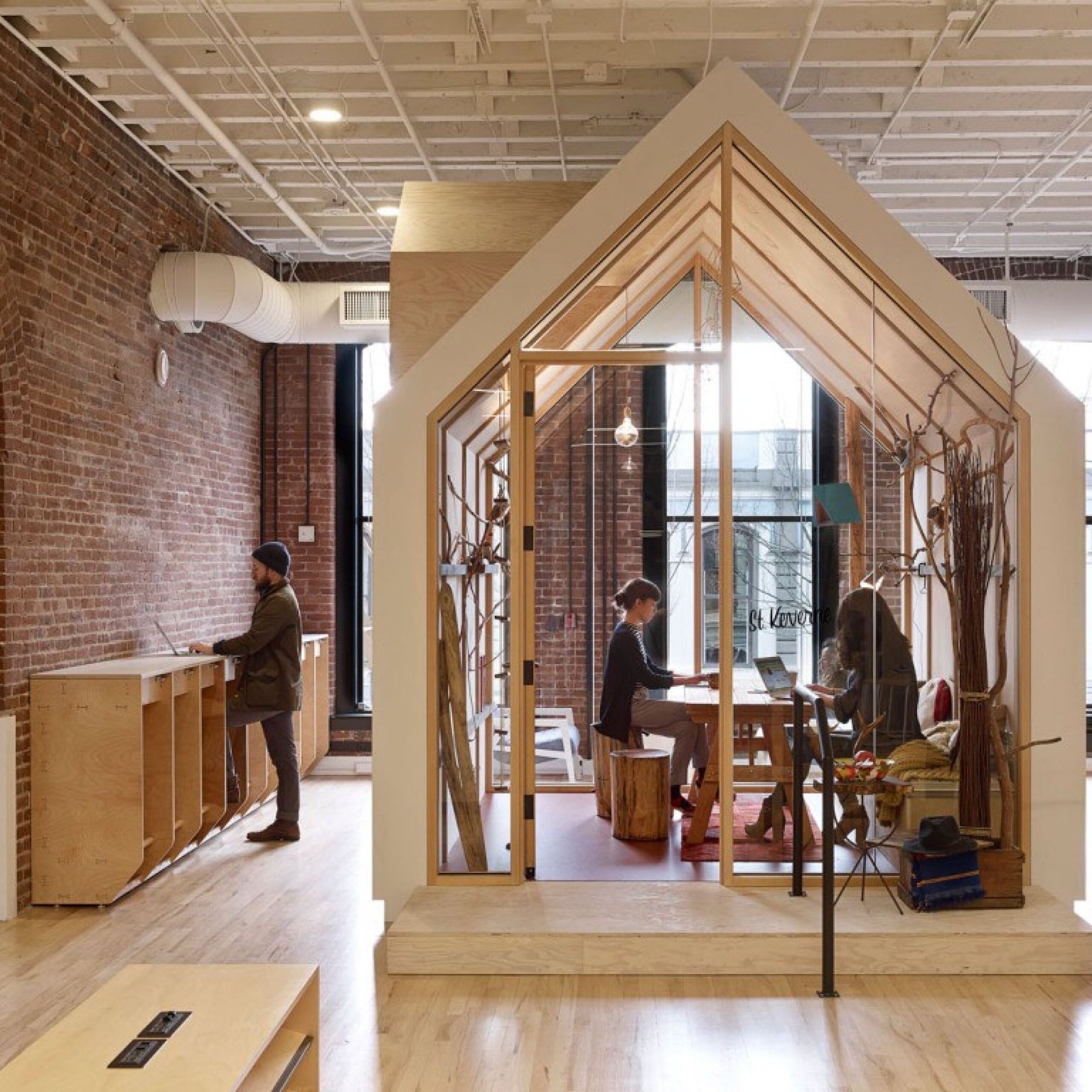
It’s easy to default to pre-baked thoughts here. Stuff like ‘I’m an online business’ or ‘I go to my clients, not the other way around’ but that type of thinking could be a mis-step. How pumped did everyone get on the idea open plan offices, co-working spaces, working from home or distributed teams? Yet the reality and results of the pendulum swing has left us all a bit wanting. I miss the branded work space and I predict it’s gonna rise again!
13. Claim a position, craft the message
If you cast your eye across the class of ‘up and comer’ brands there’s a consistent theme that runs true through all of them: They know who they serve and how to talk to them. Positioning and messaging are the foundations of great brands and it takes a purposeful effort to get this part singing in your business model.
Laying claim to an idea, a product or a service for specific audience is so incredibly important to your brand success. You cannot be for everyone. So who are you for? And what do you do? And how is that different? Those simple questions (plus maybe reading this post I wrote on positioning) might just yield the answers you need to create a more durable brand.
Build more depth
In truthfulness, most of the brands we work with start out with some pretty basic but important foundations, they are not doing all 13 things identified in this list and that’s fine becuase getting two or three things really right is better than doing a tonne of stuff half arsed. As your business grows and economic opportunities open up, the ‘durable brand’ becomes tangible because we have the opportunity to build these foundational layers in.
Each new layer contributes to strength of the structure opening up more opportunity to connect and do more for your audience, helping you prosper in good times and ride safely through more turbulent financial waters.
